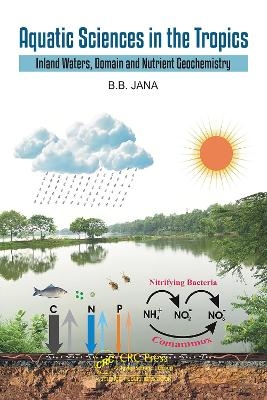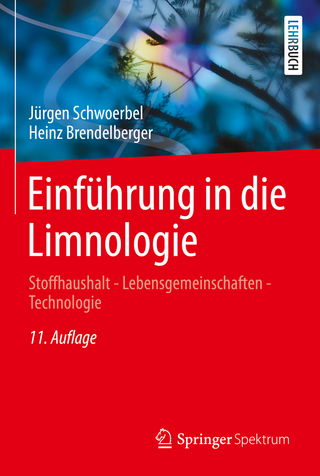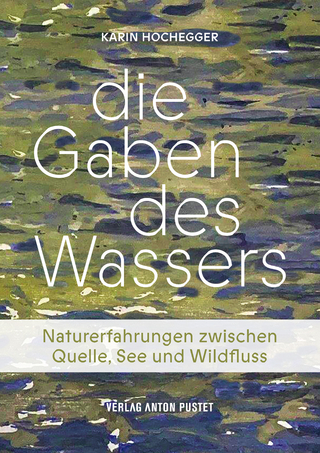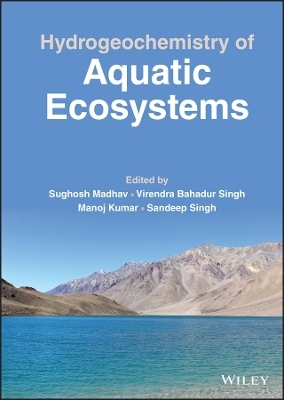
Aquatic Sciences in the Tropics
CRC Press (Verlag)
978-1-032-85980-4 (ISBN)
- Noch nicht erschienen (ca. März 2025)
- Versandkostenfrei innerhalb Deutschlands
- Auch auf Rechnung
- Verfügbarkeit in der Filiale vor Ort prüfen
- Artikel merken
It is anticipated that the academic community, students, teachers, instructors, researchers, colleges, universities, institutions, administrators, policy makers, public libraries and the general public with an interest in these topics will find this text to be a valuable source of information and provide in-depth knowledge.
Professor (Dr.) B.B. Jana, a Fellow of the National Academy of Agricultural Sciences, New Delhi, has published multiple books, monographs, and contributed chapters to UNESCO Encyclopedias, garnering him distinction both at national and international arena. He has over 255 peer-reviewed research publications to his credit, has mentored 32 Ph.D. candidates, and has been the main investigator of over 20 significant research projects, including one DST-sponsored project that involves collaboration with the Indo-European Union. His writings have received widespread citations and documentation. He has won numerous major honors for his exceptional work in the areas of aquatic sciences, fisheries sciences, ecological engineering, environmental microbiology, etc. He has received the Emeritus Fellowship twice—once from the UGC for the first term and the next one from the AICTE. He held positions as DAAD Visiting Fellow in Germany and Post Doctoral Fellow in the then USSR, respectively. He was instrumental in the founding of the International Center for Ecological Engineering (ICEE), the Department of Environmental Management, and the Department of Microbiology at the University of Kalyani. He is connected as a board member of the International Ecological Engineering Society, Switzerland, and as an editorial board member of several esteemed journals. Professor Jana has taken part in numerous international conferences as an invited speaker and/or chair, and he has traveled many countries of the world. He currently serves as the ICEE’s academic advisor of the ICEE at the University of Kalyani. In addition, he was an Adjunct Professor at the Indian Institute of Technology in Kharagpur, West Bengal, India, in the Department of Aquaculture Engineering. His current research focus is on eco-sanitation, namely using human urine instead of traditional chemical fertilizer. One of his findings, published in Ecological Engineering (doi: 10.1038/news 070625-13), was highlighted by News@Nature.com. On August 28, 2016, an article titled “Now Human Urine as an Organic Alternative to Chemical Fertilizers” (http:///indusbusinessjournal.com/2016/08/now-human-pee-organic-alternative-chemical-fertilizers/) appeared in the IndoUS Business Journal (http:///indusbusinessjournal.com). His other recent papers on the topic are highlighted and discussed in the article.
Preface. Anatomy of Waters. The Horizon of Tropical World. Inland Water Resources. Lotic Environment. Light and Temperature Domain. Inorganic Carbon Complex and Buffer System. Dissolved Oxygen Complex. Major Ions. Nutrient Geochemistry. Index. Author's Biography.
| Erscheint lt. Verlag | 17.3.2025 |
|---|---|
| Zusatzinfo | 12 Illustrations, color; 240 Illustrations, black and white |
| Verlagsort | London |
| Sprache | englisch |
| Maße | 178 x 254 mm |
| Themenwelt | Naturwissenschaften ► Biologie ► Limnologie / Meeresbiologie |
| Naturwissenschaften ► Biologie ► Zoologie | |
| Weitere Fachgebiete ► Land- / Forstwirtschaft / Fischerei | |
| ISBN-10 | 1-032-85980-6 / 1032859806 |
| ISBN-13 | 978-1-032-85980-4 / 9781032859804 |
| Zustand | Neuware |
| Informationen gemäß Produktsicherheitsverordnung (GPSR) | |
| Haben Sie eine Frage zum Produkt? |
aus dem Bereich


